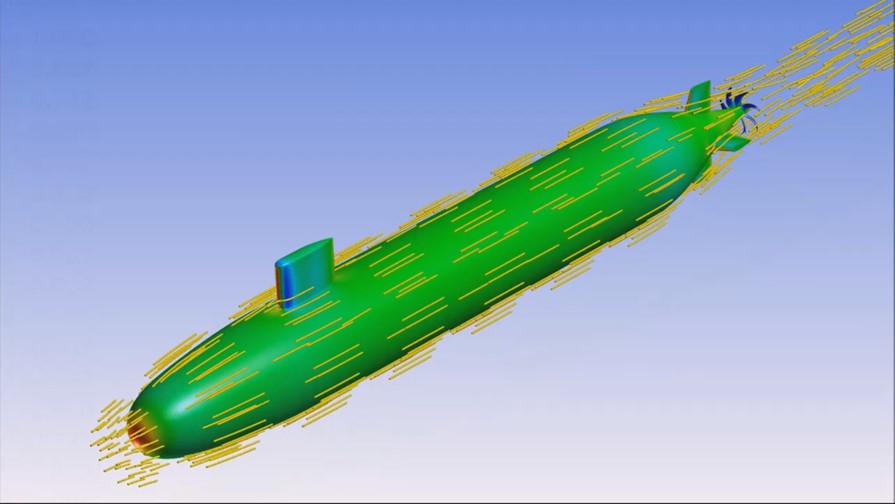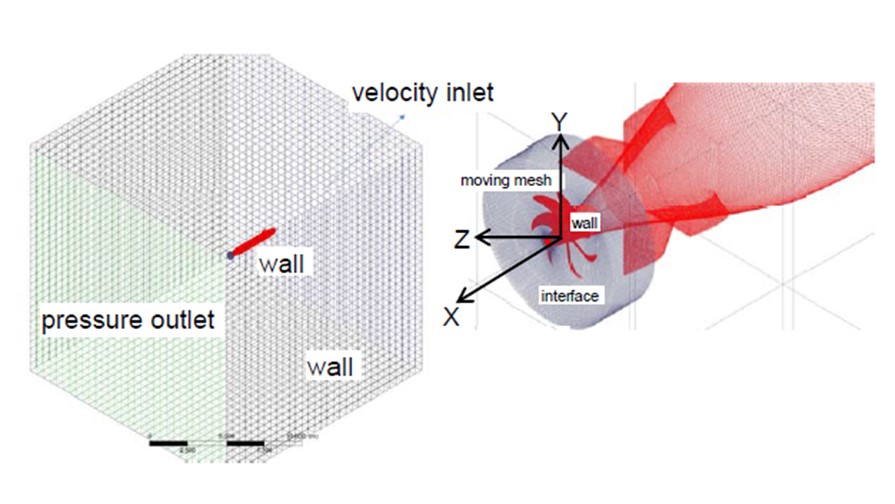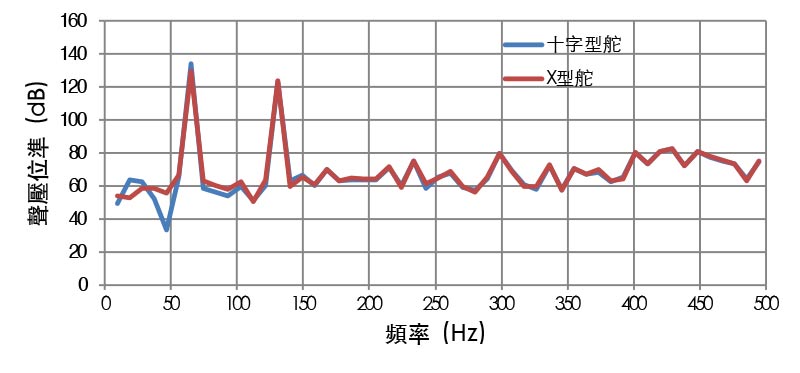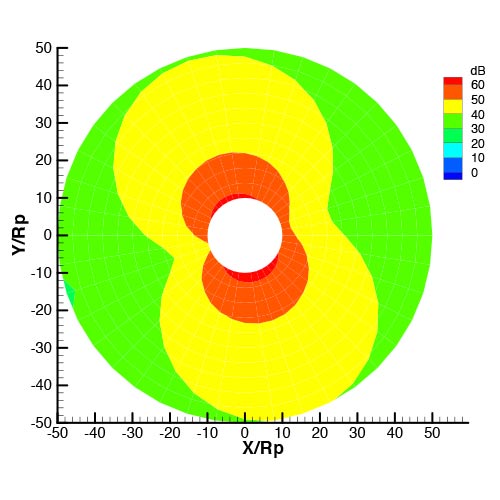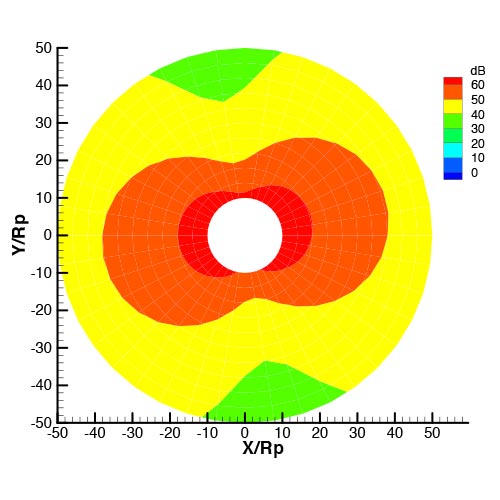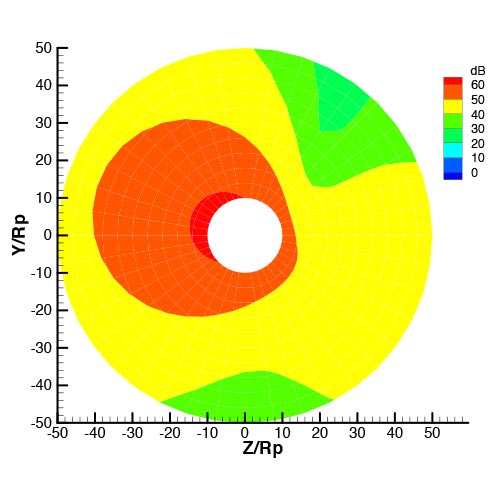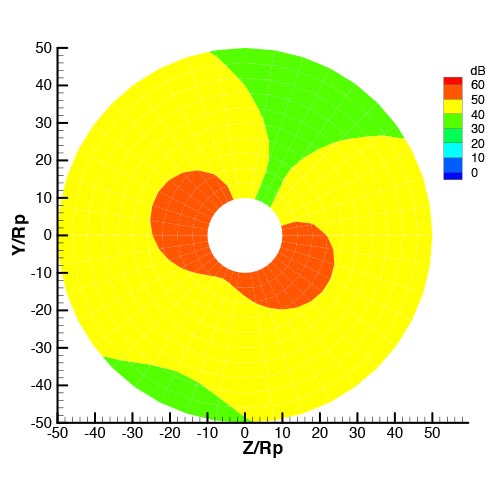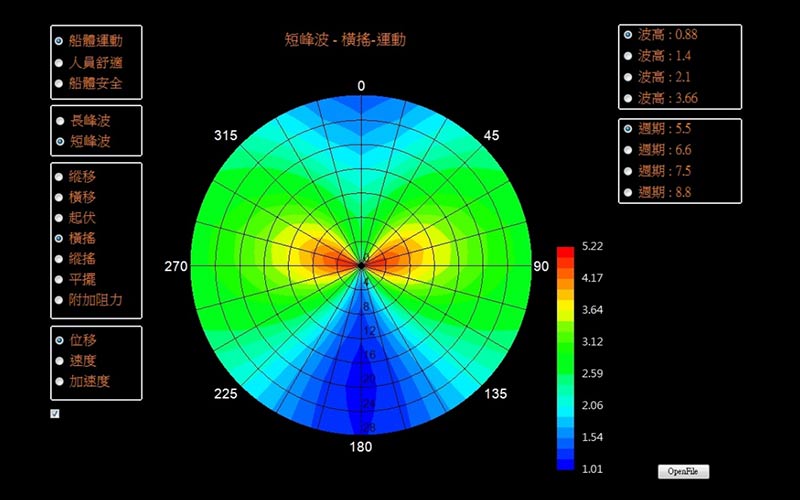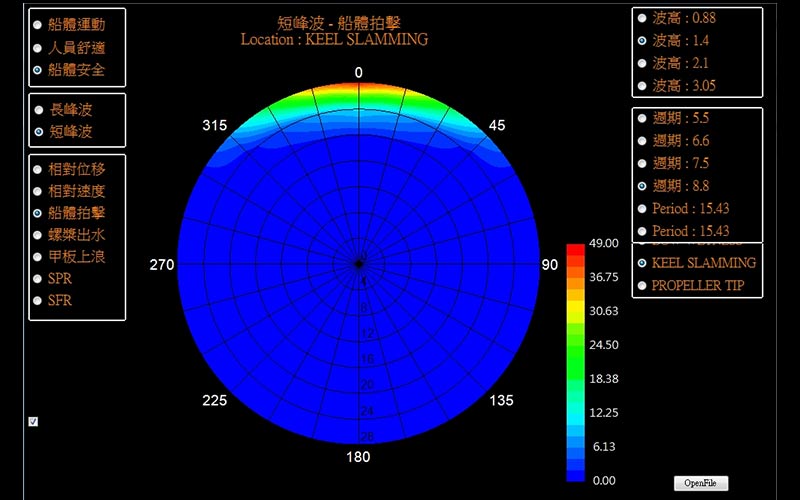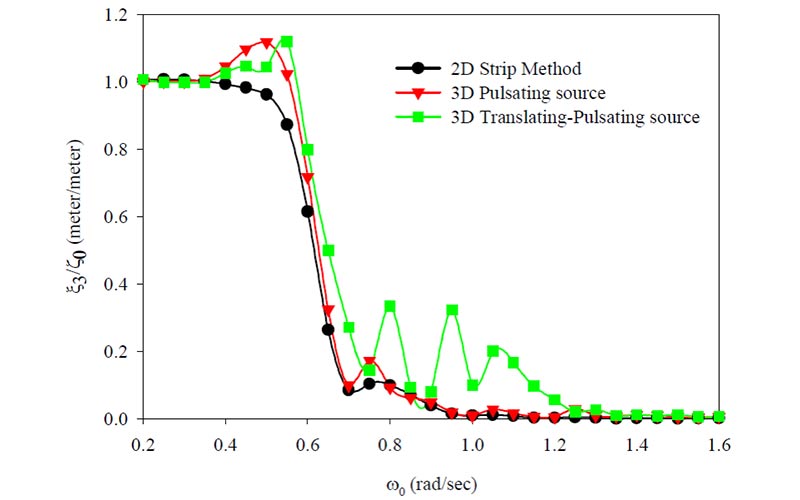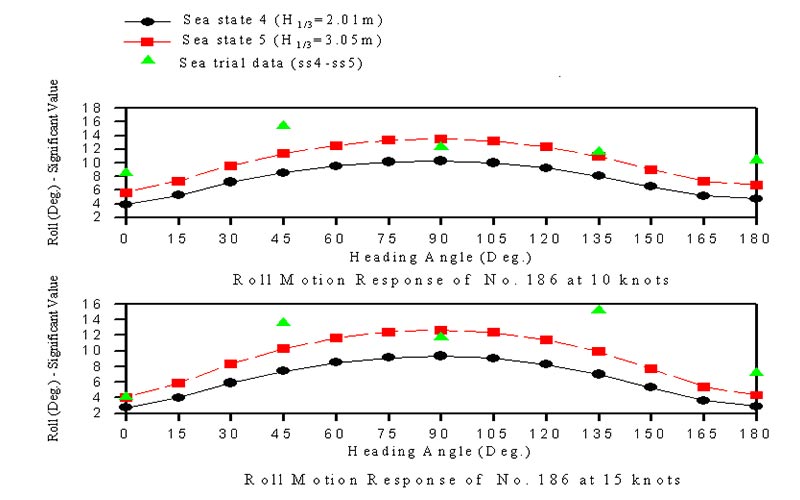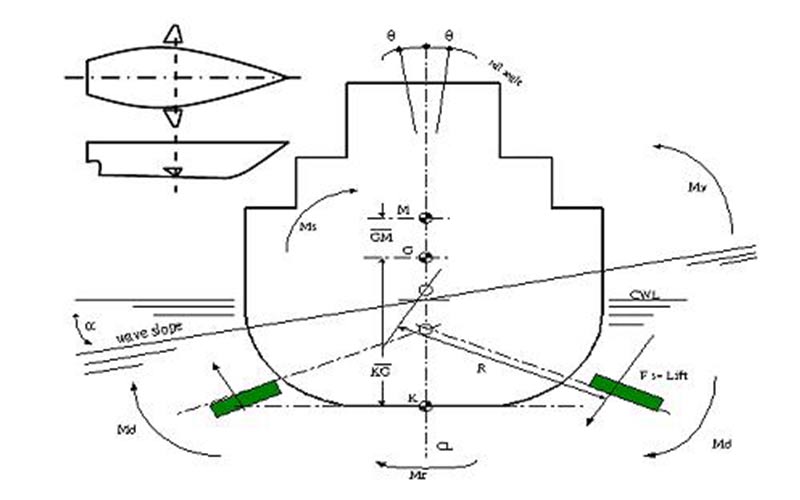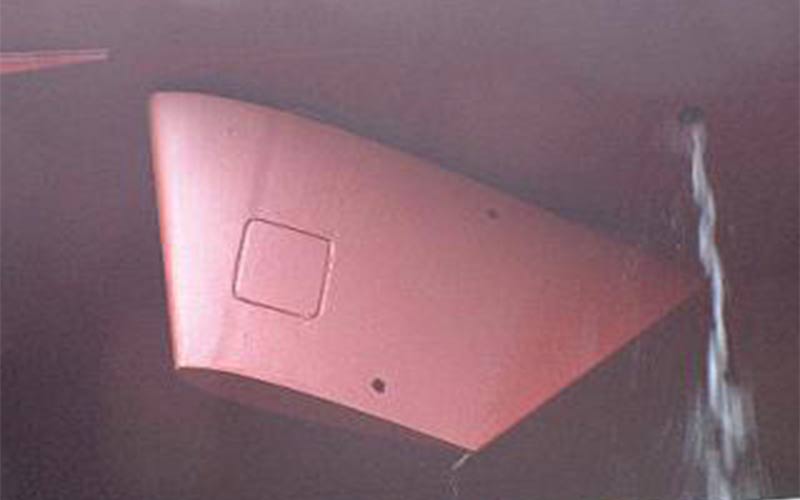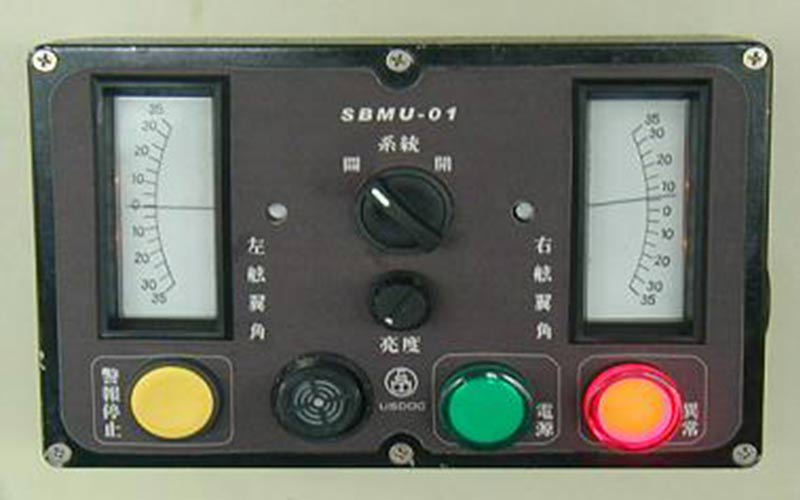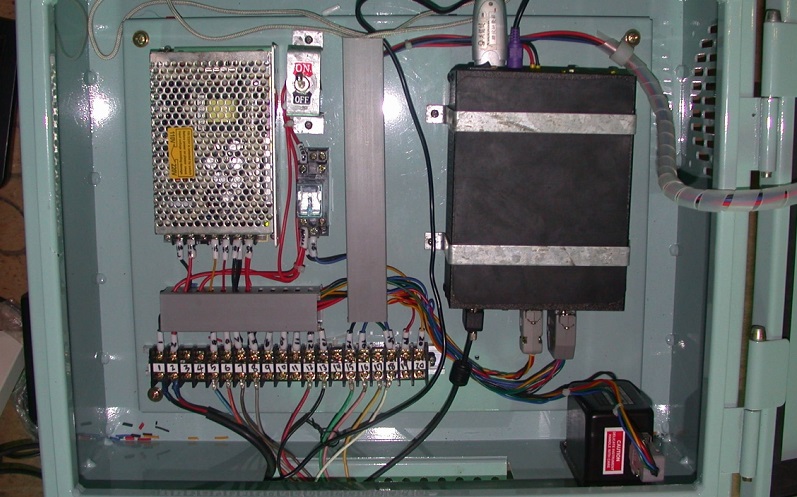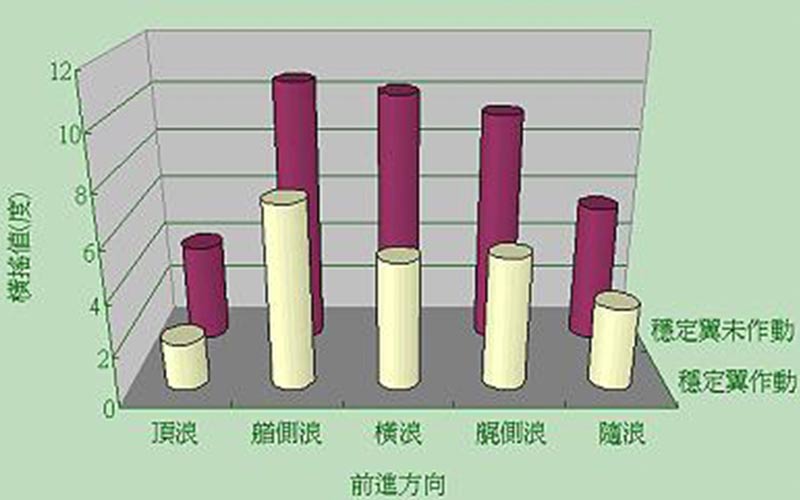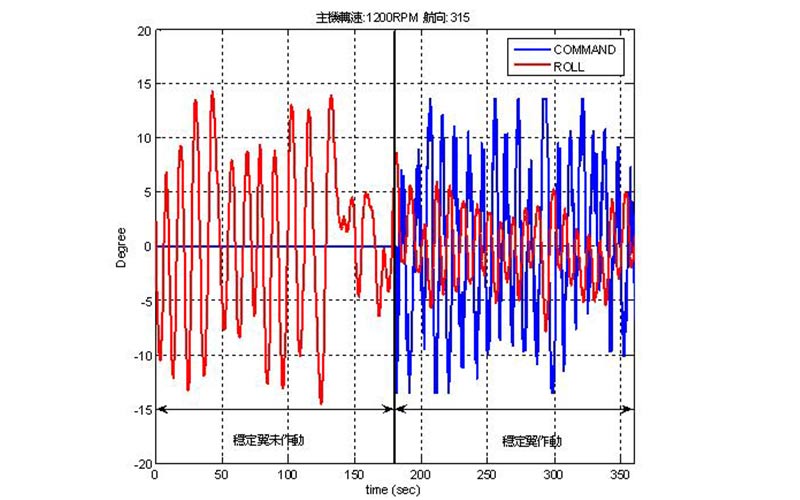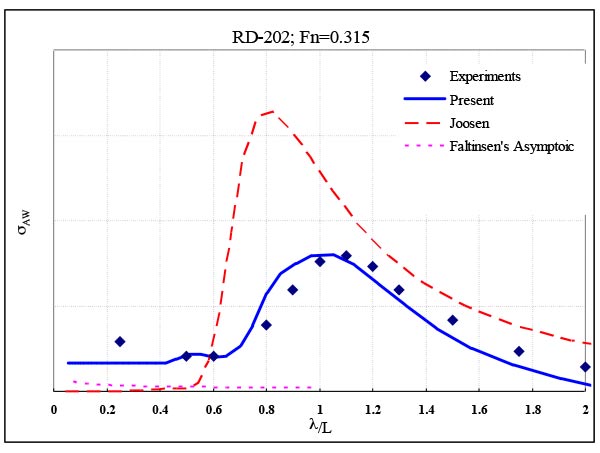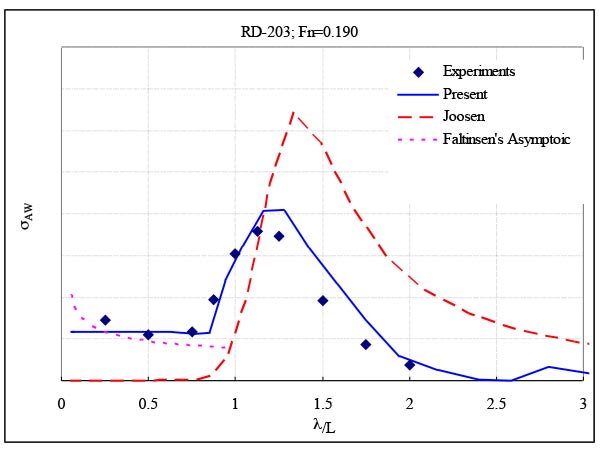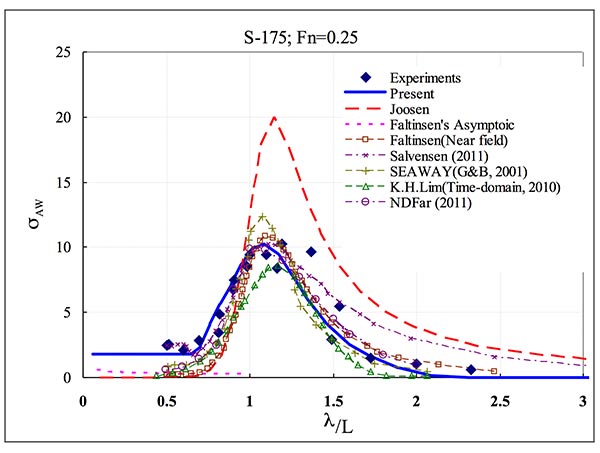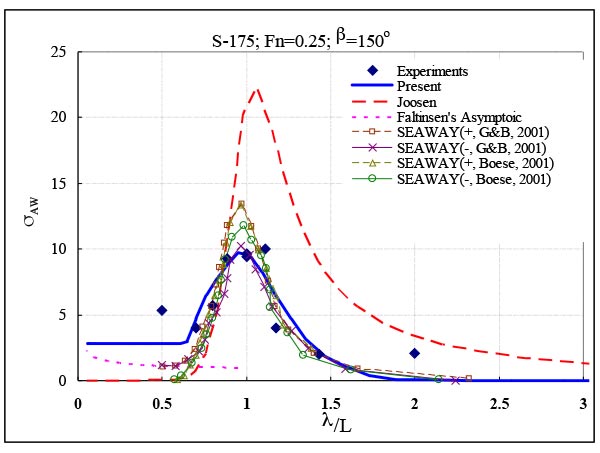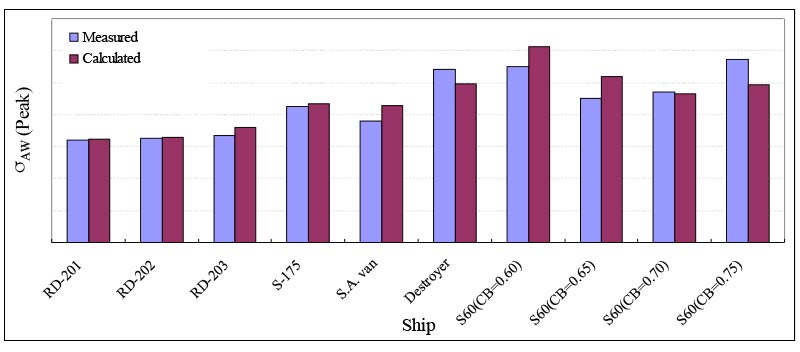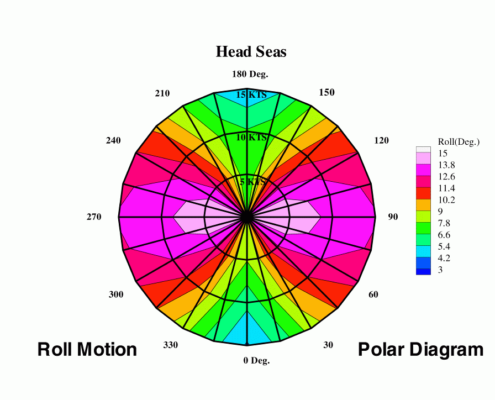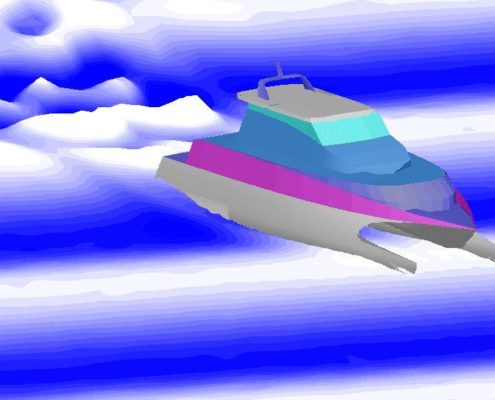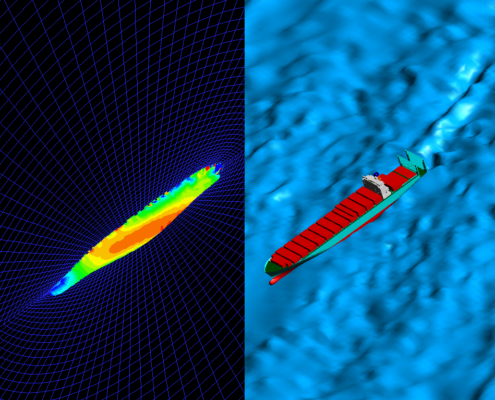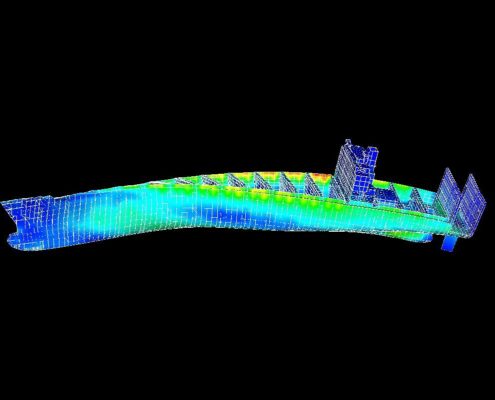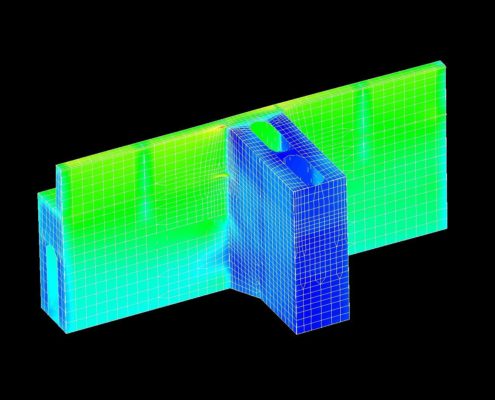When the propellers are free from cavitation, such as submarines at diving depth, the radiating noises due to the propeller unsteady forces dominate. The simulations for hydrodynamics including stern wakes and propeller unsteady forces are carried out by CFD (Computational fluid dynamics) technology, and results are compared with the experimental data. The accuracy of the predicted noises depends on the CFD results. The predicted noises in model scale are then transformed to the full-scale values according to the pressure-similarity relation. It is found that propeller inflow is more uniform, and the radiating noise can be decreased.
Technical Achievements
➢ To establish the geometry and computational mesh of submarine and propeller, and the error of the ship resistance and wake factor between the numerical and experimental results are under 2% at ship design speed.
➢ The CFD results are treated as dipole strengths in the linear wave theory to predict the radiating noises due to the unsteady forces of the model propeller.
➢ To improve the design of appendage to make the propeller inflow more uniform and the acoustomotive pressure reduce 40%.
Ship Seakeeping Performance Analysis
The motion of ships at sea is affected by waves from all directions. This results in complicated and irregular ship movement. The performance analysis of wave resistance can help us understand the movement and performance of a ship under the impact of wind and waves.
The wave resistance and behavior of a ship includes the operational performance of the instruments and equipment, as well as the work efficiency of the crew and job morale, all of which significantly influence proper task performance. Therefore, if an analysis of endurance and performance of a ship can be carried out at the initial design stage, design improvements and an assessment of safety can be made.
SOIC has several suitable tools for calculation and the movement analysis of different types of ship. These can be used to calculate the kinematic performance under various navigation conditions and provide prediction, analysis and recommendations for sea endurance and performance.
Ship Anti-rolling Stabilizer Fin Control System
The Ship Anti-rolling Stabilizer Fin System consists of a pair of active control fins and intelligent control cores mounted on both sides of the hull, which can automatically suppress the rolling moment caused by wind and waves and reduce the rolling motion of the ship in wind and waves, to improve comfort during the voyage.
In addition to the stability of the hardware system, this Control System analyzes the optimum control parameters based on the ship speed and sea conditions automatically by artificial intelligence in the design of core software, and combines the Anti-rolling Stabilizer Fin Control System with high-function and high-rigidity, and be capable of understanding the actual operation performance of stabilizer fin in all types of sea conditions by analyzing the log files of actual ship operations, for further calibration of the system to achieve the best performance.
(This product control system has applied for a patent with the Republic of China)
System Characteristics
➢ The embedded computer equipped with rt-linux core, with high system stability, small in size and high in performance.
➢ The intelligent control core can adjust the optimum control parameters automatically according to the speed and sea conditions to maximize the anti-rolling effect.
➢Digital or analog signal transmission can be selected according to the size of the vessel, taking both cost and performance requirements into account.
➢ The operating interface is simple and easy to learn and the special functions can be added or modified according to the requirements of ship owner.
➢ It is developed and produced domestically with full control of the technology and the repair and maintenance within the service life is protected.
➢ Quick delivery and good after-sales service.
Analysis of Added Resistance in Waves
In this research, the numerical technique to predict added resistance in waves is developed. The added resistance in waves is considered as nonlinear interaction between hull and waves, and is difficult to be predicted correctly. In practice, to evaluate ship power in real seaway, an additional sea margin is introduced to take all uncertainties into account, such as added resistance in waves and propulsion efficiency in waves. However, to meet demands of ship energy efficiency, the conventional resistance evaluation, which using a rough margin to take over the added resistance prediction, would be challenged.
The main objective of this research is to establish the analysis technology of resistance performance for the ship sailing in waves; however, the added resistance in wind and waves is a highly non-linear problem, therefore, the degree of difficulty is rather high. Since it is highly recommended that the hull form design tool must be fast and reasonable during the early design stage, a hybrid approach is proposed, and validation in various hull types is carried out. The far-field method based on the Lin & Reed’s theory is adopted with velocity potentials obtained from linear two-dimensional strip theory. In addition, Fuji & Kuroda’s empirical formulation is adopted in the estimation of added resistance short waves. The works are done in various benchmarks, including a container vessel, an oil tanker, and a mono-hull fast ship to validate the proposed approach. By comparing with experimental data for various ship types, the accuracy of proposed hybrid approach is identified, and provides confidence to potential user.
Comparison of added resistance calculation and test value for each ship type in waves
Comparison of the peak added resistance for each ship type calculation and test value (average of speed for each ship
Motion Response and Structural Load
The seakeeping tools used in SOIC are the 2D strip method (USDDCMO) and 3D panel technique (HSC3D). We provide predictions of the motion and wave load for a ship in regular and irregular seas. Speed Polar Plot has been developed to display the boundaries between ship speeds and ship-wave heading angles associated with design criteria in a particular sea state. This speed polar plot can provide the estimation of the seaworthiness for ships in early design process.
Using the linearised three-dimensional source distribution technique (HSC3D), numerical computations have been performed for the wave piercing catamaran advancing in oblique waves and validated with a series of experiments The HSC3D can account divergent and transverse wave system as well as interaction between the hulls at the high speed range of multi-hulls.
SOIC have developed an integrating system USDDC/FIPSAS combining the load predictions from the sea keeping analysis to the structural finite element analysis. The highly streamlined tool greatly improves the reliability of our structural design of new types and all special purpose ships.
In the USDDC/FIPSAS, the motion response effects and wave loads (include hydrodynamic pressures) of ship in waves are precisely handled by using the 3D ship motion/wave load program HSC3D.
The overall finite element structure analyses are preformed by solving structural response induced by the instantaneous wave loads predicted and imported from the 3-D panel method. Detailed responses of local structures of any interested parts can be further analyzed by using finer mesh models with local loads and displacements from overall analysis.
Since the USDDC/FIPSAS system has been highly integrated, the refining process is possible in a short period. Most reliable and optimized structure will be inherent in our products which will leave owners from any nuisance defects.

